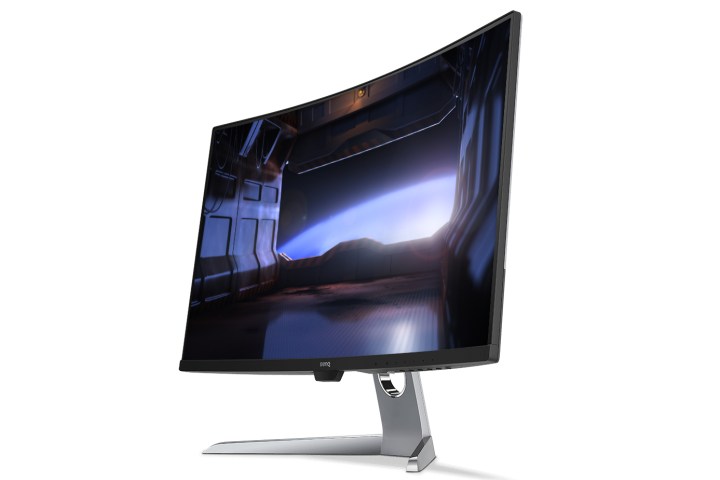
Gamers looking for a monitor supporting AMD’s FreeSync 2 technology now have a new option from BenQ: The EX3203R. Available now for $700, it’s a 32-inch curved display with a QHD resolution, an 1800R curvature, and a 144Hz refresh rate.
If you’re not familiar with AMD’s FreeSync 2 technology, it arrived at the beginning of 2017 as an alternative to the original FreeSync platform. Both synchronize the frames-per-second output of an AMD-based graphics card with the display’s refresh rate. This eliminates the visual screen tearing and stuttering that typically arises when the game’s framerate fluctuates.
But the FreeSync 2 name is somewhat misleading as it’s not the successor or a replacement to the original FreeSync. Instead, it simply adds features on top of the synchronization aspect such as support for HDR, low input latency and low framerate compensation.
Regardless, here are the specifications for BenQ’s new display:
- Screen size: 31.5 inches
- Resolution: 2,560 x 1,440 (QHD)
- Refresh rate: 144Hz
- Panel type: VA
- Aspect ratio: 16:9
- Curvature: 1800R
- Brightness: 400 nits
- Contrast ratio (native): 3,000:1
- Contrast ratio (dynamic): 20,000,000:1
- Response time: 4ms gray-to-gray
- Viewing angles: 178 degrees (both)
- Pixels per inch: 93
- Color gamut: 90 percent DCI-P3
- Color amount: 16.7 million
- Color depth: 8-bit
- Ports: 2x HDMI 2.0, 1x DisplayPort, 1x USB-C, 2x USB-A, 1x Headphone jack
BenQ’s new curved monitor is a DisplayHDR 400 certified device, meaning it falls at the bottom of VESA’s new three-tier certification system. DisplayHDR was designed to better inform customers about the level of HDR quality provided in desktop displays. DisplayHDR 400 is the entry-level tier while DisplayHDR 600 is the next level up followed by DisplayHDR 1000 at the top. The numbers actually stem from the display’s maximum brightness level, which in this case would be 400 nits.
Meanwhile, you will see BenQ advertise support for HDR 10 on the product page. This is currently the industry standard for monitors supporting high-dynamic range, providing brilliant colors and deep blacks. Adding to
Other features packed into BenQ’s new display include a component to reduce screen flickering and one that filters out blue light. The Brightness Intelligence Plus component will detect the ambient brightness and color temperature in your surrounding area to adjust the display accordingly.
Finally, the EX3203R has an ultra-slim bezel, giving the appearance of an edge-to-edge panel. The idea is for customers to purchase three units to create one long, curved screen with very little visual separations between each display. Yet buying three of these screens would set you back $2,100.
You can purchase BenQ’s new FreeSync 2-based EX3203R display straight from the company for $700 right here, or though B&H Photo and Video here for the same price.
Editors' Recommendations
- AMD is finally taking FreeSync to the next level
- BenQ’s new 4K HDR projector is designed with gamers in mind
- FreeSync vs. G-Sync



